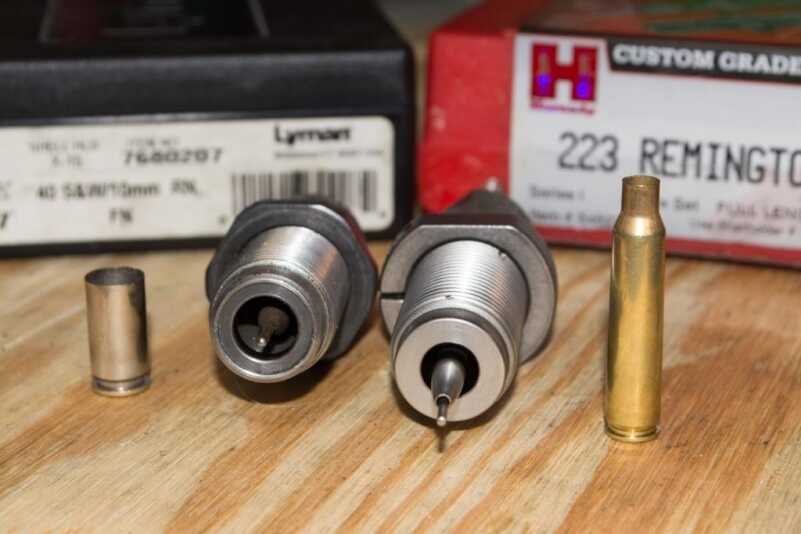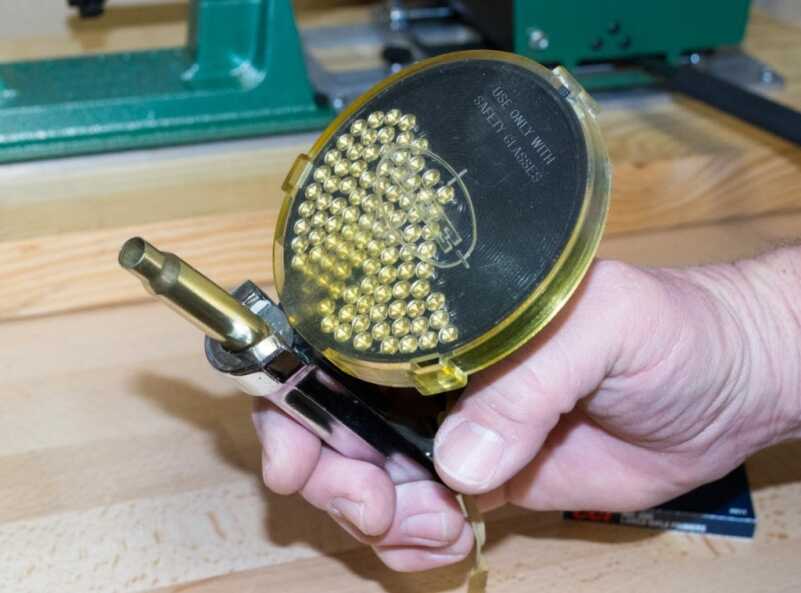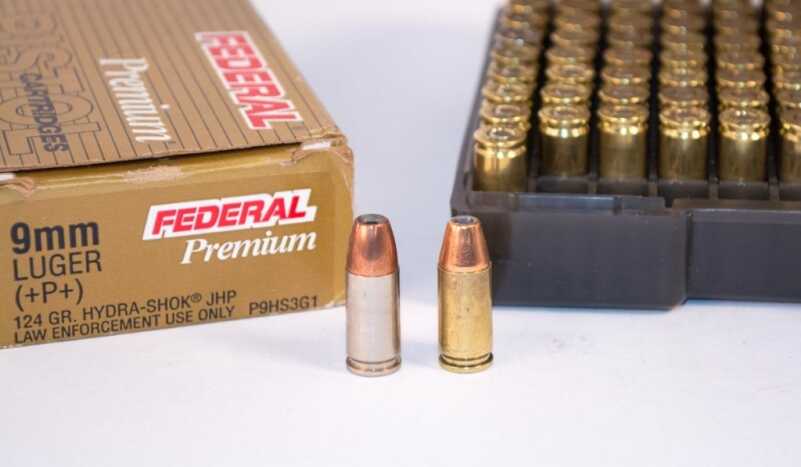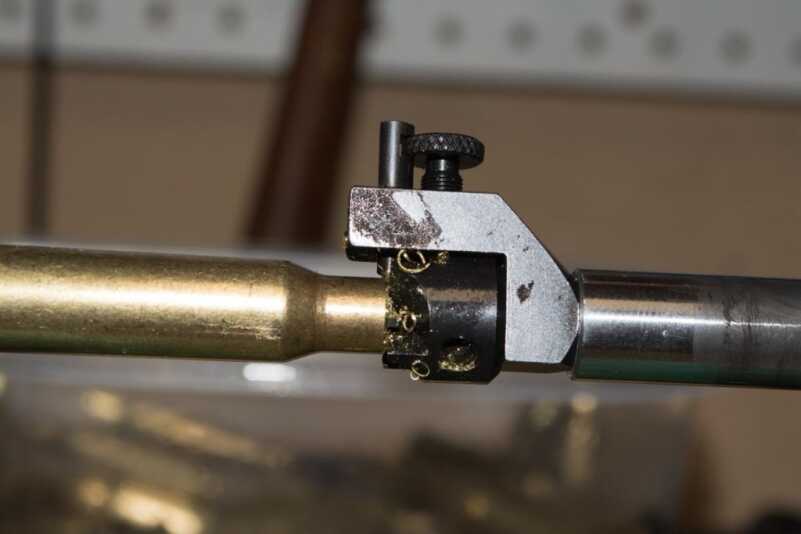
The circle of reloadling life…
SERIES
Part 1: Want to Reload Your Own Ammo? Basic Questions to Consider
Part 2: The Reloading Process
Part 3: The Gear You’ll Need and What It’ll Cost You
Part 4: Brass Cleaning and Preparation to Load
Part 5: Brass Resizing
Part 6: Trimming Cartridge Cases
Part 7: Repriming the Cartridge Case
Part 8: Powder, Propellants, and Pressure
Part 9: All About Primers
Part 10: Projectiles: Materials, Weights, and Styles
Part 11: Seating and Crimping Bullets
Part 12: To Crimp or not to Crimp
Part 13: Final Inspection and Packaging Tips
Last time, in part one of our series on reloading your own ammunition, we talked about reasons why learning how to reload might make sense. Reloading might save you some money, but it’s also an enjoyable hobby and a way to make the perfect ammunition for your needs and your specific gun.
Next, let’s discuss the process of reloading straight wall pistol cartridges. Those are the easiest to do, so it’s a good place to start. We’ll comment on the things you have to do differently for bottleneck rifle and pistol cartridges while we’re here. Once you understand the basic process, our next chapters on equipment and consumable needs will make a whole lot more sense. Cool with you?
When you boil all the complexity down, reloading is simply recycling fired cartridges. Just like plastic milk containers, but a lot less smelly. For most modern ammunition types, a cartridge is composed of several components — some of which are expendable and others reusable. Fortunately, as we discussed in part one, the most expensive part – the cartridge case – is reusable.
So, assuming you’ve been a good range scrounger and have hoarded a big supply of once-fired brass cartridge cases, the basic process (for straight wall pistol cartridges) looks something like this:
1. Inspect and clean the brass
Technically, you don’t have to clean brass cartridge casings to reload them, but I always do, mainly because you don’t really want to be running filthy brass through your reloading equipment and later, your gun. It’s also a good idea as it makes it much easier for you to spot cracks or deformities in your brass so you can be sure to dispose of bad cases. You know what? I’m being too gentle here. Clean your brass. Not just for cosmetics and smoother reloading, but for safety.

However you do it, with a dry tumbler or liquid method like the Lyman ultrasonic cleaner on the right, be sure to clean the loose dirt from your brass before reloading. It doesn’t have to be shiny, just clean.
2. Remove the spent primers
The primer is one of the expendable items. Once it’s blown up, it’s no good anymore. Either a dedicated decapping die is used to punch the old primer out of the bottom of the casing, or more commonly, the die that resizes your brass will also knock the old primer out. Both types of dies have a steel pin the pokes the old primer out the bottom of the case.
3. Resize the cartridge case
Here’s some weird and unintuitive science. When you fire a cartridge, the whole brass casing actually expands in the chamber of the gun. As the pressure goes down when the bullet leaves the barrel, the brass shrinks back a bit, thereby allowing extraction from the chamber and ejection right at the person standing to your immediate right. The brass case doesn’t shrink all the way back to original size. A resizing die is used to “encourage by brute force” the brass back into the correct exterior dimensions. This step ensures that your reloaded ammunition will fit back into the chamber of your gun and fire properly.

Resizing dies have a pin that knocks the spent primer out from the inside.
4. Belling the case mouth
While this sounds like a boxing move, it simply means opening up the opening of the cartridge case mouth so you can fit a new bullet in there. In the previous step, you squished the dickens out of the brass from the outside in. In this step, you “re-open” the case mouth just a little so you can insert a fresh bullet without jamming and deformation.

The case mouth belling step opens the mouth just enough for a bullet to “start” to fit inside.
5. Priming the cartridge
Remember that spent primer we knocked out earlier? It’s time to shove a new one in the primer pocket.

With This simple hand tool you can re-prime hundreds of cases per hour. I’ve never timed myself, but it’s fast.
6. Adding powder
Since we just put a new primer in, there’s no longer a hole in the bottom of the case so that we can add a new measure of powder, or as the reloading geeks call it, propellant. Powder is measured by weight, in grains, but the right equipment allows you to dispense the correct amount by volume too. Basically, you figure out how much volume it takes for the desired weight and adjust your powder dispenser accordingly.
7. Seating the bullet
Seating refers to pushing the bullet into the (now slightly opened) case mouth to the proper depth.
8. Crimping the cartridge case
Earlier, we belled the case mouth to make room for the bullet. Seating the bullet does nothing to undo that belling at the case mouth, so it’s necessary to press the case mouth back into its proper shape. We’ll get into more detail later, but for now, just know that crimping is not what holds the bullet in place. The tension of the bullet and cartridge case interior walls does that. Crimping just evens things out and removes the belling we created. The whole crimping thing is the source of much confusion, so later in the series we’ll cover that in agonizing, but accurate, detail.
9. Packaging and inspection!
I like to list this as the last step as it’s important to check your work. For me, doing this as I put completed cartridges into containers makes sense. I look to make sure that primers are seated correctly, and that bullets are seated to the right depth. I also look one more time for damage to the case or bullet. Perhaps something got mashed up during the reloading process. This final inspection is really about safety. If you forget to insert a primer, that’s not the end of the world as your gun will go click instead of bang. If there are problems with the case, things could get dangerous.

The neat thing about reloading your own is that you can customize the performance to your tastes.
This sounds like a lot of steps doesn’t it? It can be, but fortunately, you can pay for automation. Depending on your equipment choices, many of these steps can be consolidated into a single action. We’ll get into all that you all about that soon.
If you want to reload bottleneck rifle cartridges, like most rifle calibers, there are just a couple of extra steps from those we just covered for simple pistol calibers.

When resizing bottleneck cartridges, you need to lube the cases first. It’s kinda messy.

The first difference appears in the resizing step. Straight wall cartridges can be resized with dies that have a carbide ring inside. That prevents the case from sticking to the inside of the resizing die. It’s more impractical for die makers to fabricate carbide sizing dies for bottleneck rifle cartridges like .223 Remington, .308 or whatever, so you have to lubricate the cases before resizing. What gets lubed must get un-lubed, so you need to somehow clean the lubricant from the cases after they’re resized.

One other step required for bottleneck cartridge reloading is case trimming.
Next, when you resize rifle cartridges, they can stretch just a bit. After you shoot and resize a bottleneck cartridge case, the overall length of the case will be longer than it was before. That can cause problems with chambering, inserting bullets consistently, and can become dangerous. As a result, you need to trim the cases back to standard dimensions. While tedious, the process is simple. You “trim” extra brass from the case mouth. As this leaves some roughness, you may also need to smooth out the edges of the case mouth by chamfering and deburring. Those are fancy words for beveling the inside and outside of the freshly cut case mouth.
So there you have it. Next, we’ll start talking about the equipment you need to perform all these steps. As with any process, there are things you must have, and things that are nice to have. We’ll do our best to point out the items in each of those categories.

Why do you promote the use of a hand priming tool? Why not use the feeder on the press?
Your place is valueble for me. Thanks!…
You have convinced me to start reloading my own cartridges.
But is the last sentence of 1st paragraph after step 9 a typo or were you thinking of 2 things at once??
Just curious?
Walter
I’m glued dude, keep it coming! I’ve been on the edge looking in for years. Just haven’t pulled the trigger – pun intended.
Yo Tom, I have been reloading since the early 1980’s and it was really refreshing to read your article. Witty, short, down to earth, factual. A beginning reloader should have no problem reloading after reading your article. It is also good for us “old timers” to get a little refresher once in a while. Good job.
I have been exploring and am trying to start Annealing. Would you please include a section on this rare subject? Thanks. I am enjoying your topic although I am not new to the reloading thing,
I also rollsize the base of many calibers to remove any bulges. The typical pistol resizing die does not really full-length size due to the shell holder. I use a case-pro push-through roll sizer. On some rifle cartridges I use an arbor press and Wilson sizing dies. If you are reloading military brass, you will have to remove a crimp ring around the primer pocket. Military “spec” brass usually has a crimped primer often the bane of the reloader.
To avoid over working my benchrest brass I typically necksize using the same brass in the same rifle. When it comes to powder I use a “Harrell’s” thrower on rifle and my progressive slide bar system on pistol ammunition but I check every few loads with a digital scale.
When trimming rifle brass remember, the trimmed brass is not being replaced. Your rifle round is changing somewhere, but where? I use a inside micrometer to check the wall thickness of the case above the lower portion of the case. I have found in my experience that rifle rounds, that have been fired several times, will “thin” about one inch or so from the base of the case. The life of a rifle round is not consistent caliber to caliber so I keep a round count on my reloads.
When loading rifle rounds I check the trim and bullets seating with a micrometer to insure a match with the respective datum from the loading manual.
Finally, I use a check gauge, which is a hand-held facsimile of the chamber not attached to a firearm, to see if my reloads fit the chamber of the intended firearm.